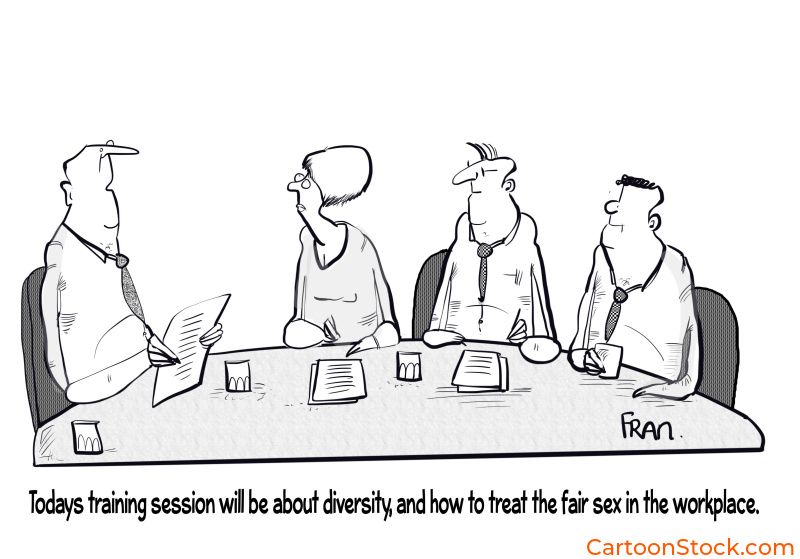HR and DEI teams are tasked with creating cultures of belonging, equity, and psychological safety. While this often involves written policies and formal training, visual communication tools—especially cartoons—can provide a valuable layer of engagement.
Cartoons are accessible, concise, and capable of conveying complex dynamics in a single frame. When used thoughtfully, they can support inclusion initiatives by encouraging self-reflection, opening up discussion, and reinforcing key values.
This article explores how HR and DEI teams can use cartoons in inclusion initiatives to improve communication and engagement.
Part of our Using Cartoons to Support Diversity, Inclusion & Belonging comprehensive guide
Why Cartoons Help in Inclusion Work
Inclusion efforts require participation, not just awareness. Cartoons can help because they:
-
Break down complex or sensitive topics into approachable moments
-
Use humor to reduce defensiveness and invite reflection
-
Represent diverse identities and situations in a visual, non-threatening way
-
Cross language and cultural barriers more easily than dense text
As a result, cartoons offer a versatile tool for reinforcing inclusive behavior, especially when combined with other communication methods.
How HR and DEI Teams Can Use Cartoons in Inclusion Initiatives: Practical Examples
1. Open Conversations with Cartoons
Cartoons can serve as a neutral entry point into difficult topics. They allow individuals to engage with scenarios without feeling personally targeted. Starting meetings or workshops with a relevant cartoon can help ease people into meaningful discussions.
2. Illustrate Policies and Procedures
Instead of relying solely on policy documents, teams can use cartoons to visually reinforce key messages—such as anti-harassment protocols or inclusive hiring practices. This makes the content more memorable and more likely to be retained.
3. Reinforce Learning in DEI Training
Visuals that reflect real workplace situations can enhance training materials. Whether embedded in slide decks or shared after sessions as follow-up resources, cartoons help reinforce learning and encourage continued conversation.
4. Include Cartoons in Internal Communication
From newsletters to onboarding guides, cartoons can make recurring messages feel fresh and accessible. They add a human touch to internal campaigns and help ensure that inclusion-related messages reach broad audiences.
Best Practices for Using Cartoons Effectively
| Purpose | Best Practice |
|---|---|
| Encourage reflection | Choose cartoons that show relatable, real-world dynamics |
| Avoid harm | Steer clear of stereotypes or humor that could alienate or diminish others |
| Increase visibility | Place cartoons in materials people already read—emails, slides, posters |
| Represent diversity | Ensure visuals include a range of identities, roles, and perspectives |
| Keep tone intentional | Use humor to spark thought—not to minimize the subject matter |
Cartoons are not a shortcut, but they are a useful complement to larger inclusion strategies. When chosen and placed with care, they can strengthen communication and foster understanding.
Q&A: Using Cartoons in Inclusion Initiatives
Q: Are cartoons suitable for all topics in DEI work?
A: Not necessarily. Some topics require sensitivity that visual humor can’t convey. However, for common inclusion themes like bias, communication, and behavior change, cartoons can be very effective.
Q: Do cartoons make inclusion messages feel less serious?
A: Not when used appropriately. A well-chosen cartoon can actually increase engagement by making the message feel relatable rather than abstract or bureaucratic.
Q: Is it better to use licensed cartoons or create custom ones?
A: That depends on your goals. Licensed cartoons are a cost-effective way to access a wide range of inclusive content. Custom cartoons are helpful if you want to reflect specific internal dynamics or branding.
Q: How often should cartoons be used?
A: Use them strategically. Including a cartoon in every piece of communication isn’t necessary. Instead, focus on placing them where they’ll support reflection, learning, or behavior reinforcement.
Keep Reading
Next Step → Avoiding Stereotypes: Best Practices for Inclusive Humor in Workplace Cartoons


